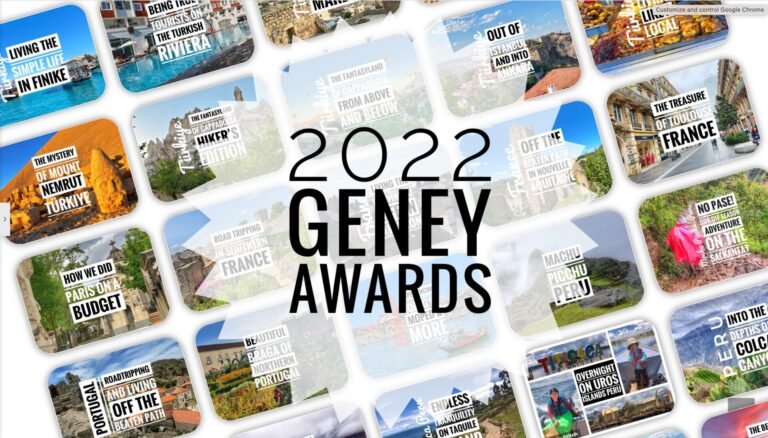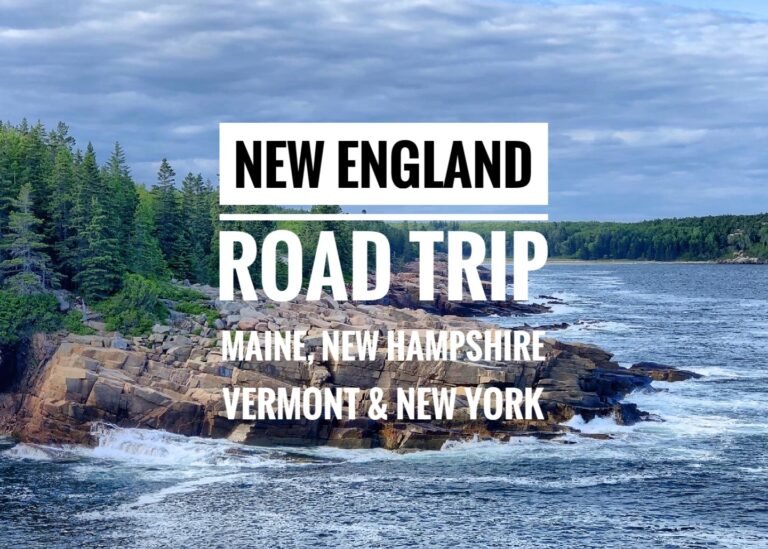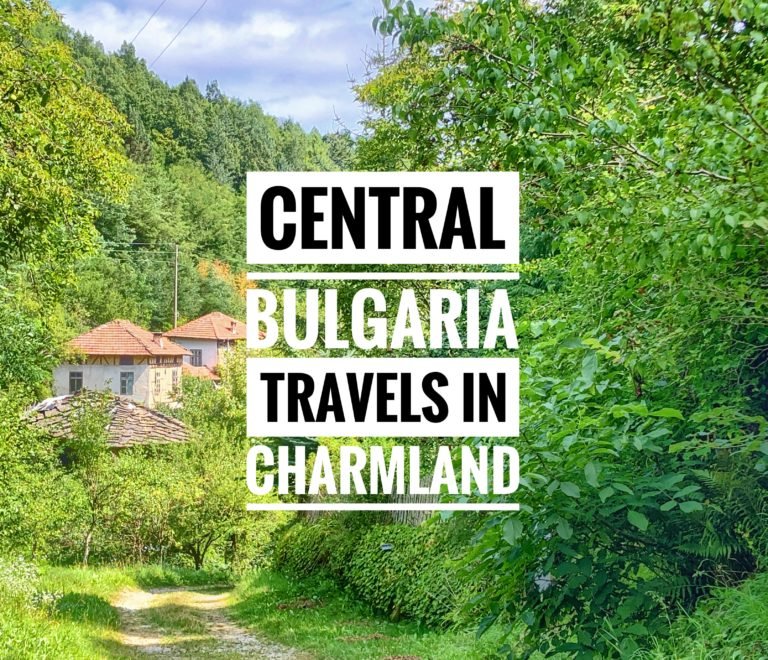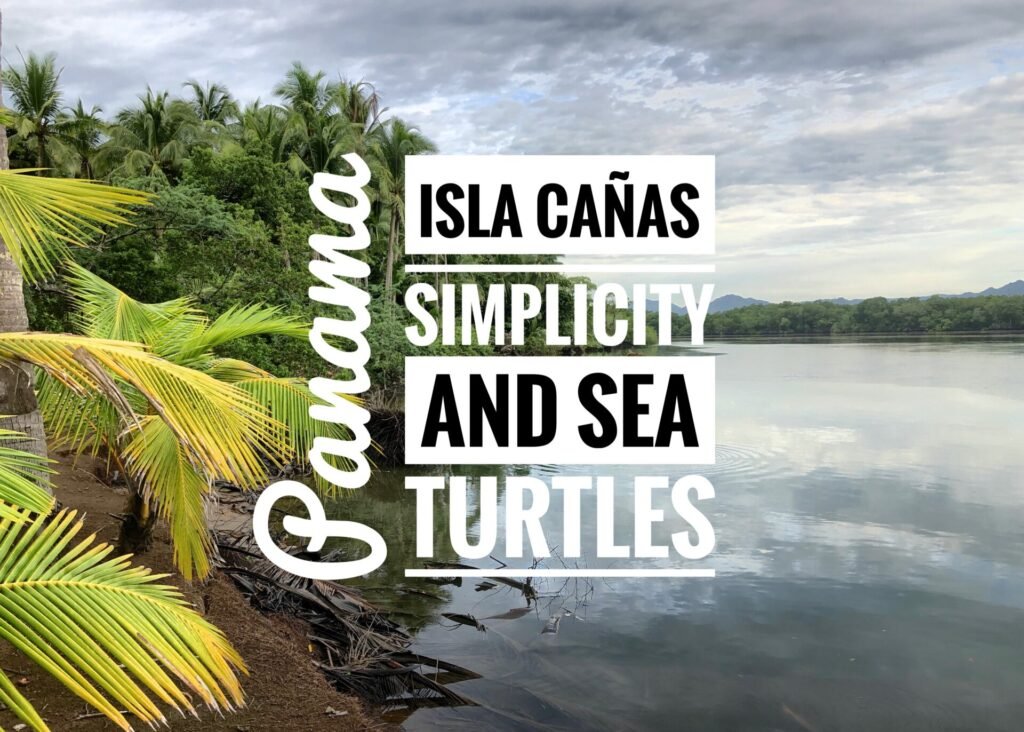
After nine weeks of luxury in a comfy orthopedic bed, stocked kitchen and hot shower, we figured we were due a little roughing it. So, from Bucaro, we had the hosts from our housesit drop us off an hour away at the Isla Cañas dock to head out to a very long ocean spit for a chance to see sea turtles laying their eggs.
Hostal Pachamama (meaning Mother Earth) is owned by a Frenchman, Jean-Pierre and his wife, Irina. They have made it their mission to help save the endangered sea turtle eggs which, despite it being illegal, are sadly typically stolen and sold by the locals. It’s a wonderful place to escape from other crowded areas of Panamá (the ones we have yet to get to), lay back, and appreciate the simple life while sleeping in a rustic hut or hammock, with only noises from tropical birds, the roaring surf and the monkeys.
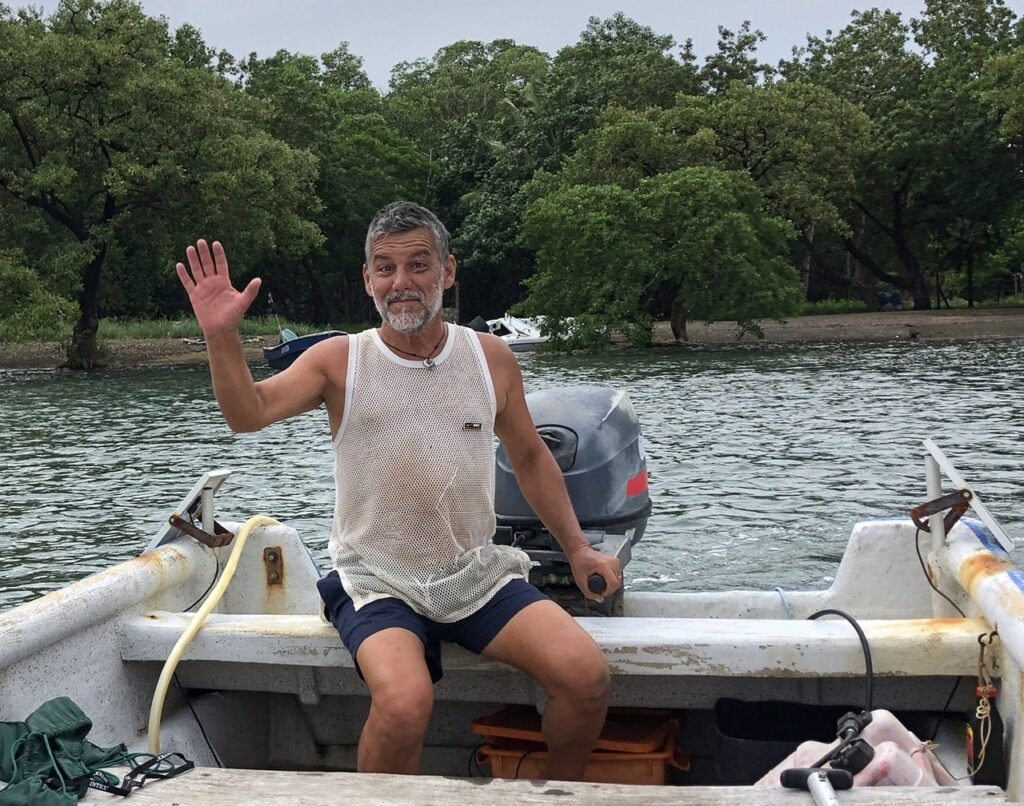
There are two ways to arrive to Isla Canas: by public or private boat. For our arrival, we had Jean-Pierre pick us up at the private dock in his boat named “Dad,” which is kinda appropriate given his paternal protection of both the turtle eggs and the way he jokes and takes care of his guests.

Arriving to our own personal Gilligans’s Island for two nights. One side of the spit is a placid estuary which is ideal for stand up paddle boarding (which we did) and kayaking. The other side, of course, was the Pacific with only wild beach on either side of the hostal.
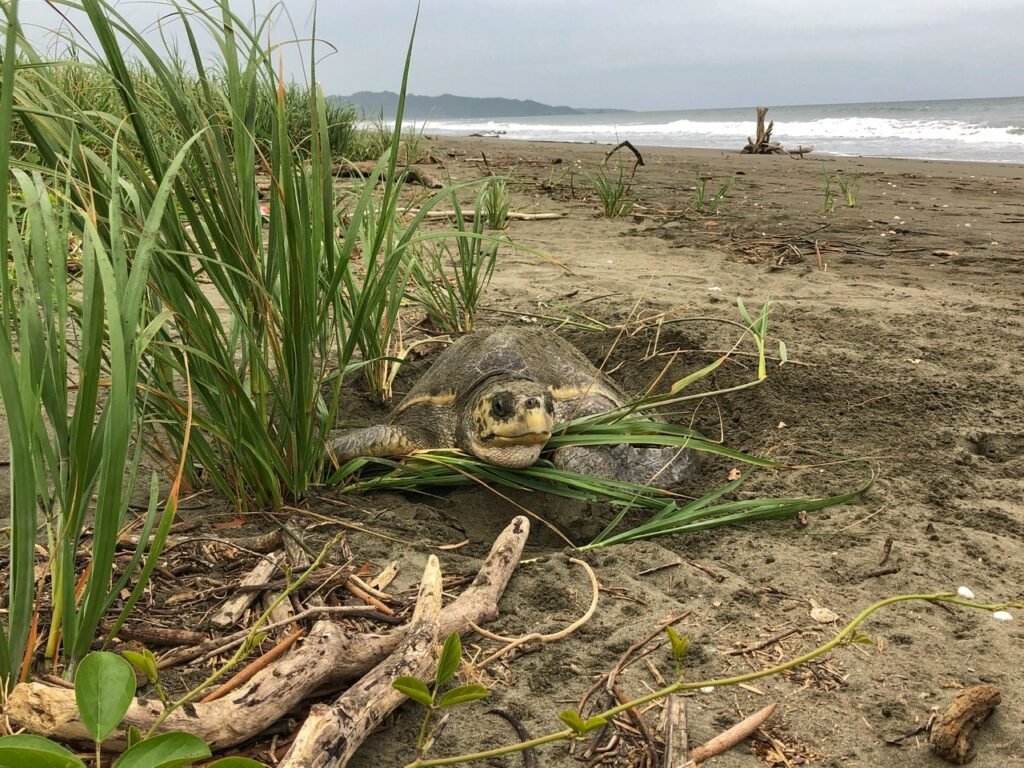
We had planned to do the turtle tour that evening with Jean Pierre, as this is typically when turtles lay their eggs. However, we got a really fantastic surprise when this Mama Pacific Olive Ridley turtle decided to plop her eggs down in broad daylight around 5 pm. And bonus for us: this meant no beach combing at 3 am!


Witnessing a sea turtle laying eggs on the beach is one of those life moments that’s just mesmerizing…truly something everyone should see. It’s purely incredulous that a turtle can find her way to the exact spot where she was born 15-30 years prior (depending on species) to bury her young. And like a tried and true single mom, she also knows exactly the method in which to do it safely. This includes venturing far enough away from the surf to ensure the eggs will not get wet and clearing the area.
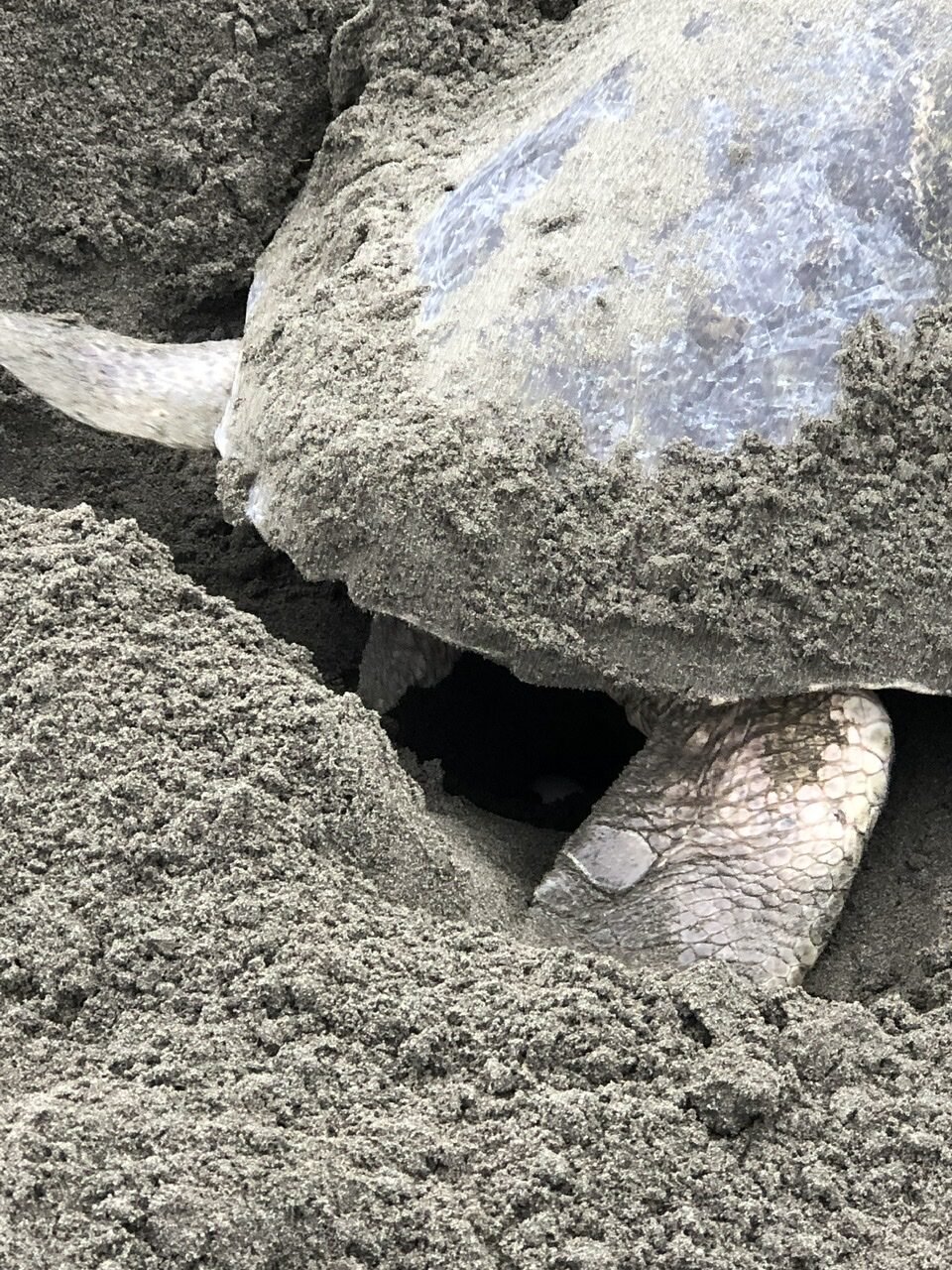
She then digs a massive hole using two cumbersome back flippers, pumping out up to 200 ping pong ball-looking eggs, (called a clutch), covering them and packing them.
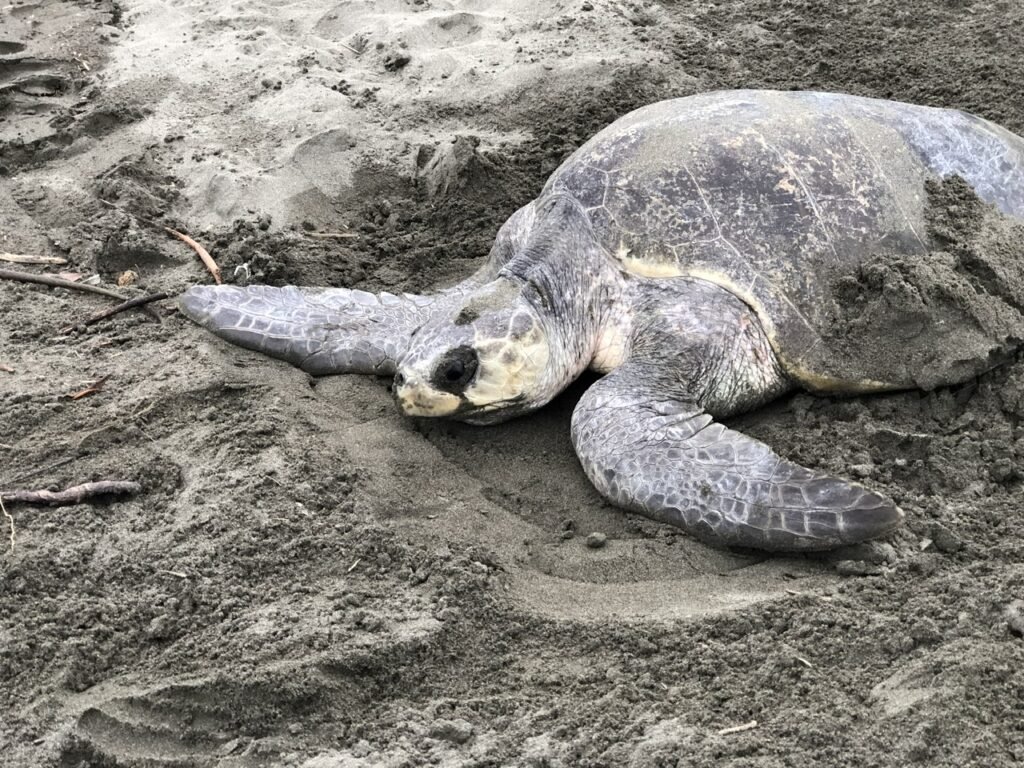
And only then, completely exhausted, she begins the seemingly endless scoot back to the ocean’s edge…

…where she can finally have a glass of wine and relax.
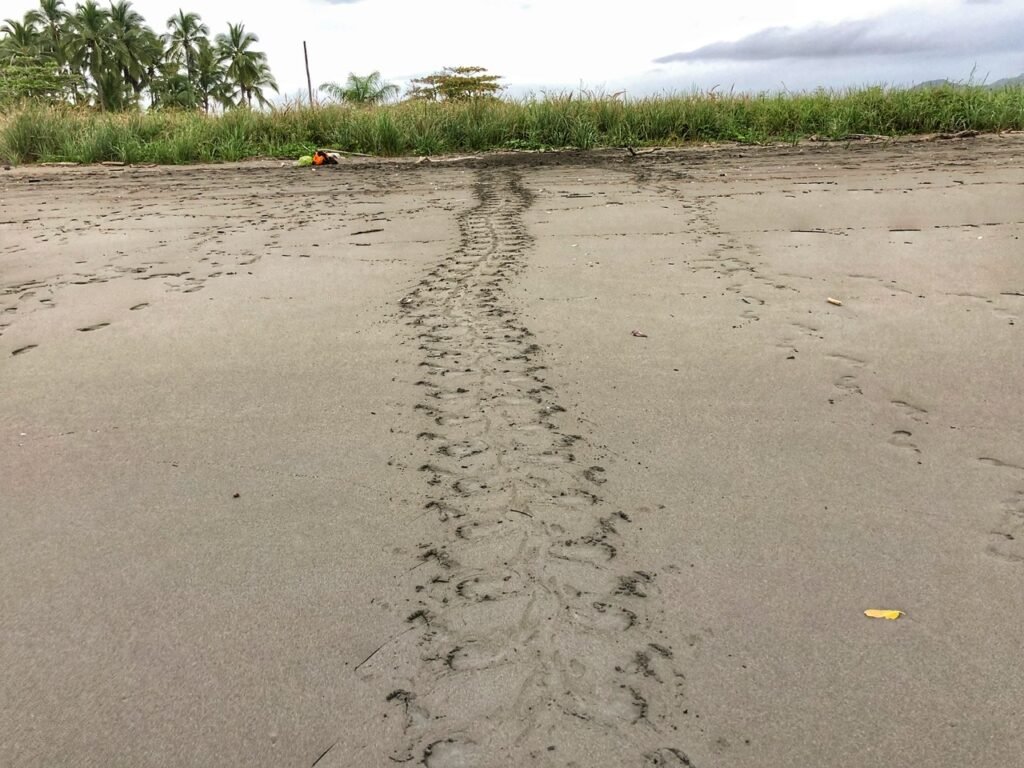
To a turtle, this might as well be Mt Everest.
Of course to see how magnificent this really is, you gotta catch it on video.
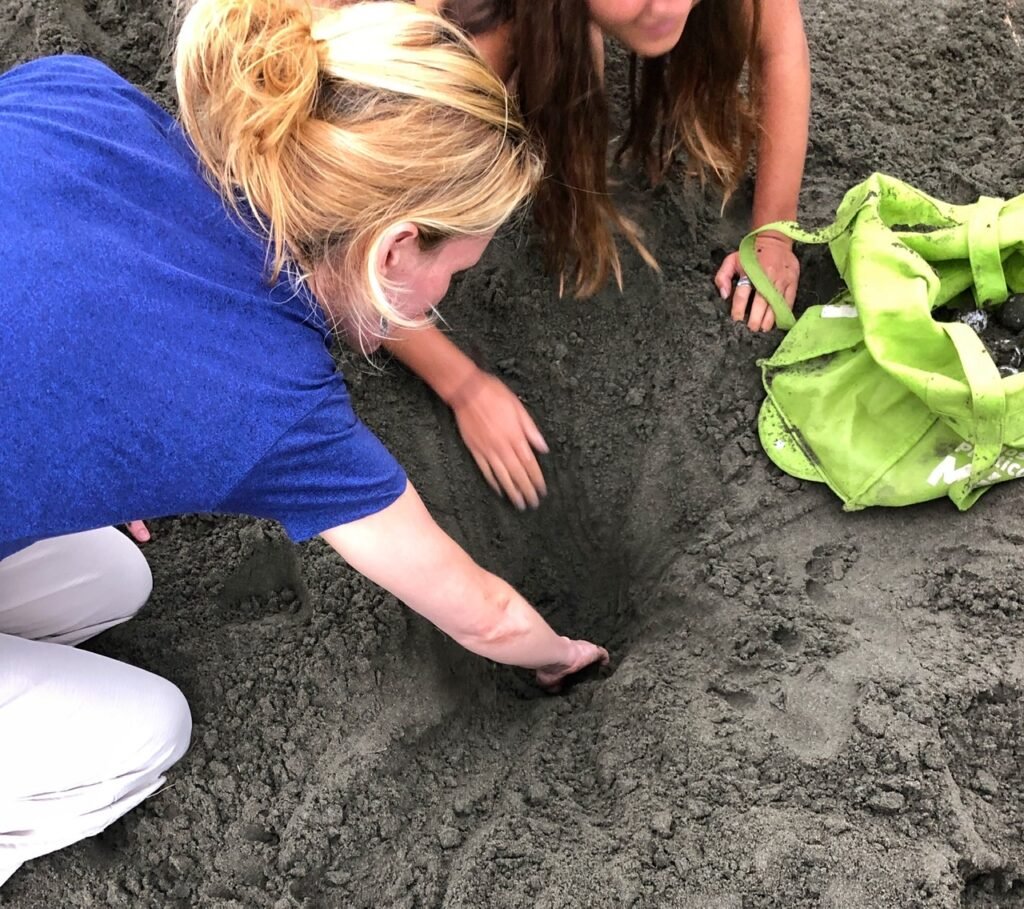
After mom has returned to the sea, us humans get to work undoing all her hard efforts to save the eggs. If she only knew…

Thanks to a carefully placed marker of sea grass, we were able to find the nest pretty quickly. And we pulled each egg out one by one, counting as we went. The eggs are about the size of ping pong balls and are soft, but fortunately do not break easily when delicately handled.

This clutch included 85 potential turtle babies, which were placed gingerly in a shopping bag.

We then carried the eggs to the vivero (nursery) where Jean Pierre had a carefully gridded and numbered system to rebury the eggs so they can incubate for 52 days. He opted to use a post hole digger rather than his back flippers.
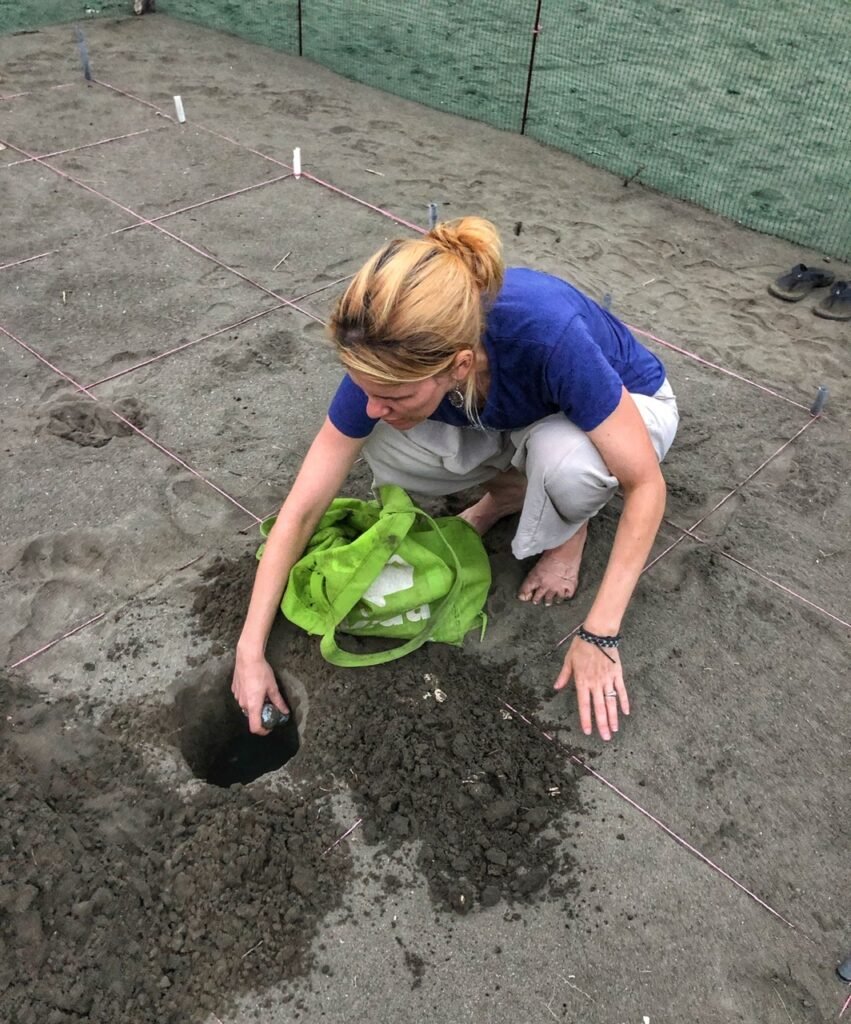
Once he finished digging, we got the joy of placing the eggs in the new hole. Rather than placing them, we were surprised to learn it is best to let them roll down the sides, as they do naturally from the Mama turtle, which prevents air traps.
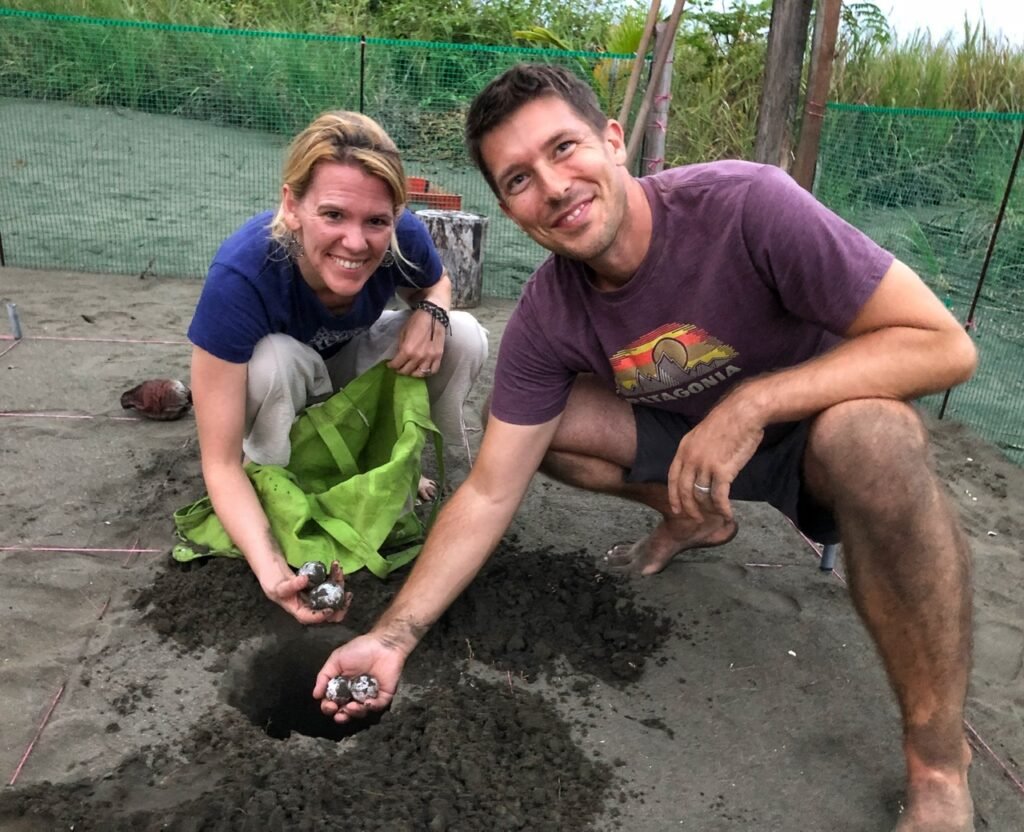
Saving the earth one turtle egg at a time.

A photo of the baby turtles when born, the part we really hope to see one day. In just under two months, they will leave John-Pierre’s nursery and begin their long gallivant to the ocean. Sadly, many will not survive this journey and only 1 in a 1000 eggs will make it to adulthood. Still, it was incredible to be part of something so important and giving them a chance.
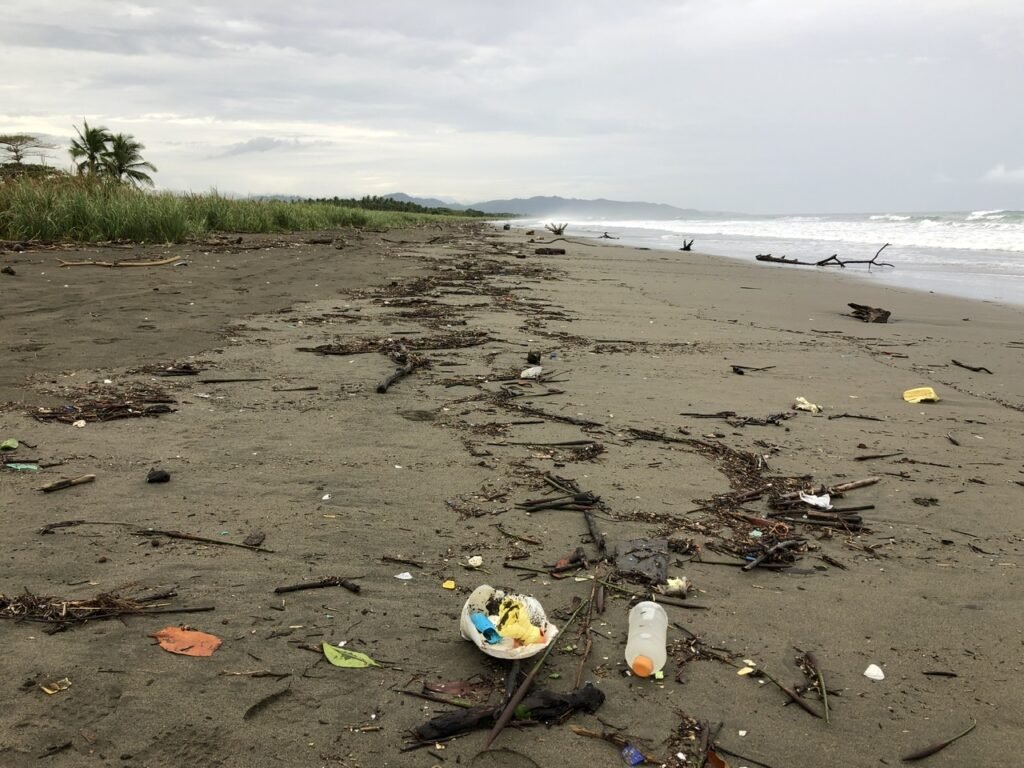
After saving the turtle eggs, we walked on the beach. The more you travel, the more you realize it’s beyond insulting what human beings are doing to this planet. So, while we walked, we picked up trash for awhile, even though this sometimes just feels kinda hopeless. The beaches are far too blanketed in plastic…micro plastics galore, bleach and oil bottles, food containers, flip flops, kids’ toys, paint buckets, millions of bottle tops and of course the newest threat…masks. We made sure to break the ear hooks of all ones we saw, because as similar to six-pack plastic rings, they are the likeliest to get caught around sea life.

Returning back to our humble abode, which included two hammocks just for us underneath. Two German backpackers were in the hammocks next door. Despite it being quite rustic, it was also a bit of a splurge for us at $36/night, but we were happy to support it because Jean Pierre is doing good things. It also included a delicious breakfast.

Inside our hut. It got a bit stuffy and we almost wish we had chosen the hammock option on the first night. However, a bonus was the bugs stayed out, thanks to the net, and we slept decently well with the waves lulling us to sleep.

The PachaDucha where we could clean all our bits and pieces. Love outdoor showers!

Greg enjoying his hammock.
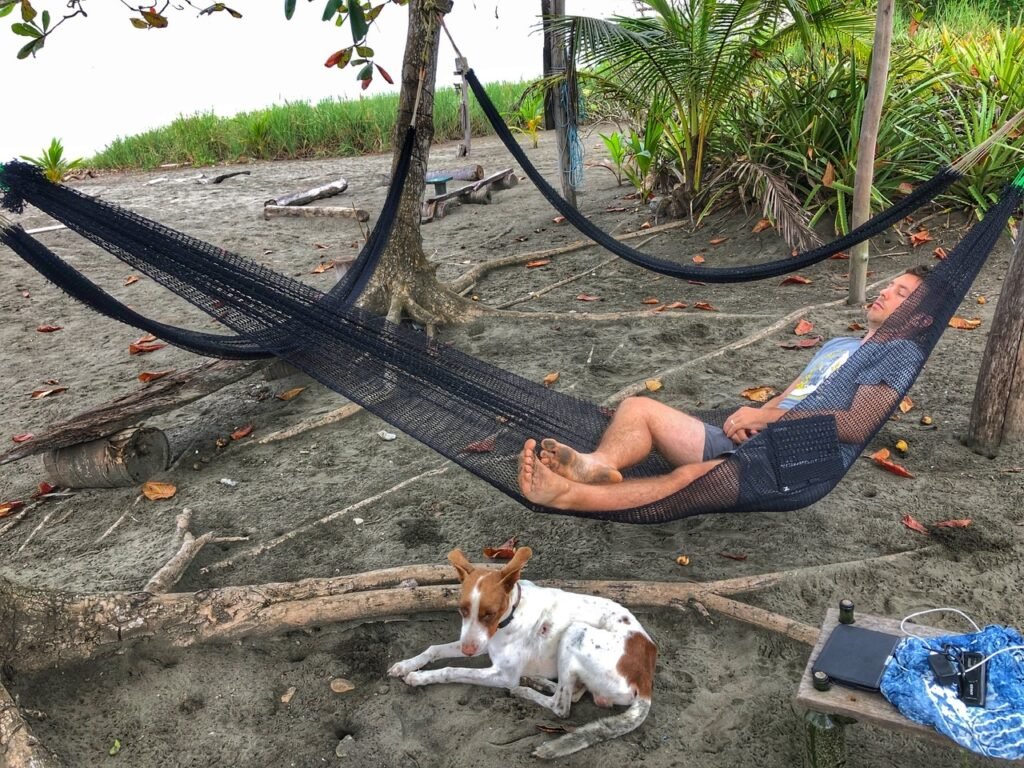
Greg enjoying a different hammock.

Heading out the next morning to go standup paddle boarding which we rented for $5. It was just stunning.
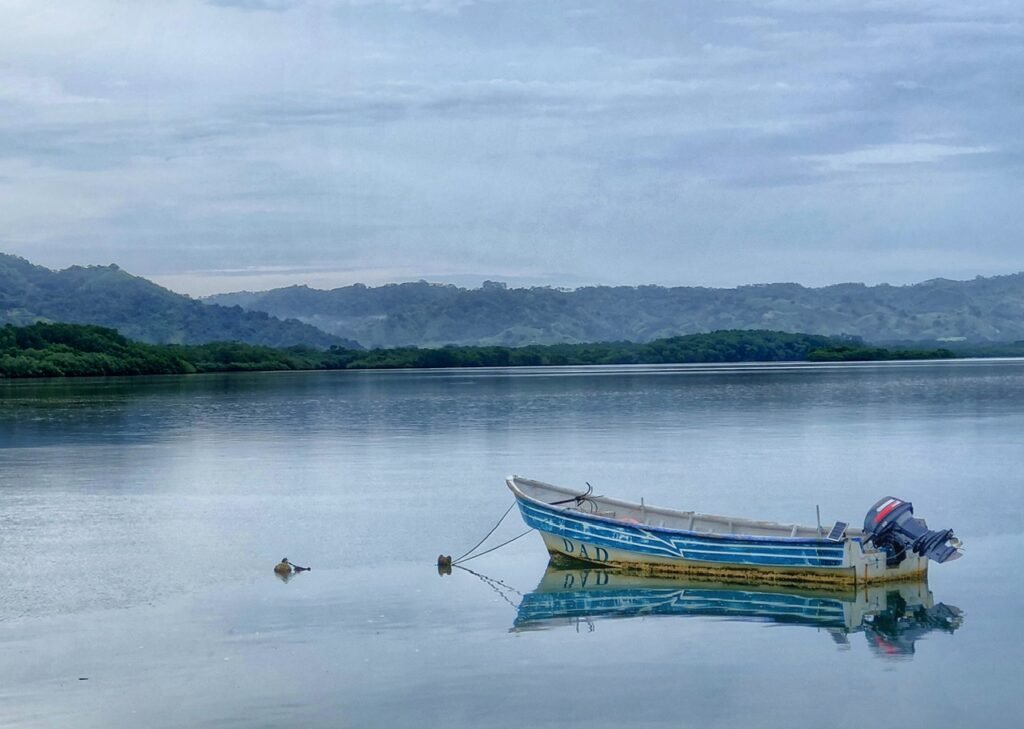
Dad. The boat.

In case you want a pick up game, there’s always a coconut lying around.

The outdoor sand floor kitchen where we cooked a couple meals.

Other times, we let Irina cook for us. Because it’s in her Russian genes, one night she made Mandy eat beets in the form of beet gazpacho. Normally, this is the ONLY vegetable Mandy can’t stand, but thanks to Irina she figured out a new trick…dousing the dirt flavor in lime juice. And then…it was actually quite yummy!

On the beach, looking toward Bucaro where we did our housesit.

The next morning, we chose the adventure option and to take the public boat with the Germans, Nikita and Jazmin, to save $12. Because we all had far away destinations that day, we left bright and early at 6:30, just after sunrise. And true to their nation’s stereotypes, they were ready to rock with backpacks on (and hiking poles at the ready if they needed them) ten minutes early. In order to take the public boat, we walked about 2km down the beach and through the town where we encountered this adorable church.

Our public boat water taxi driver ($1). Everyone is so friendly in Panamá.

Heading into the mangroves felt like a theme park ride as we crossed back onto the mainland.
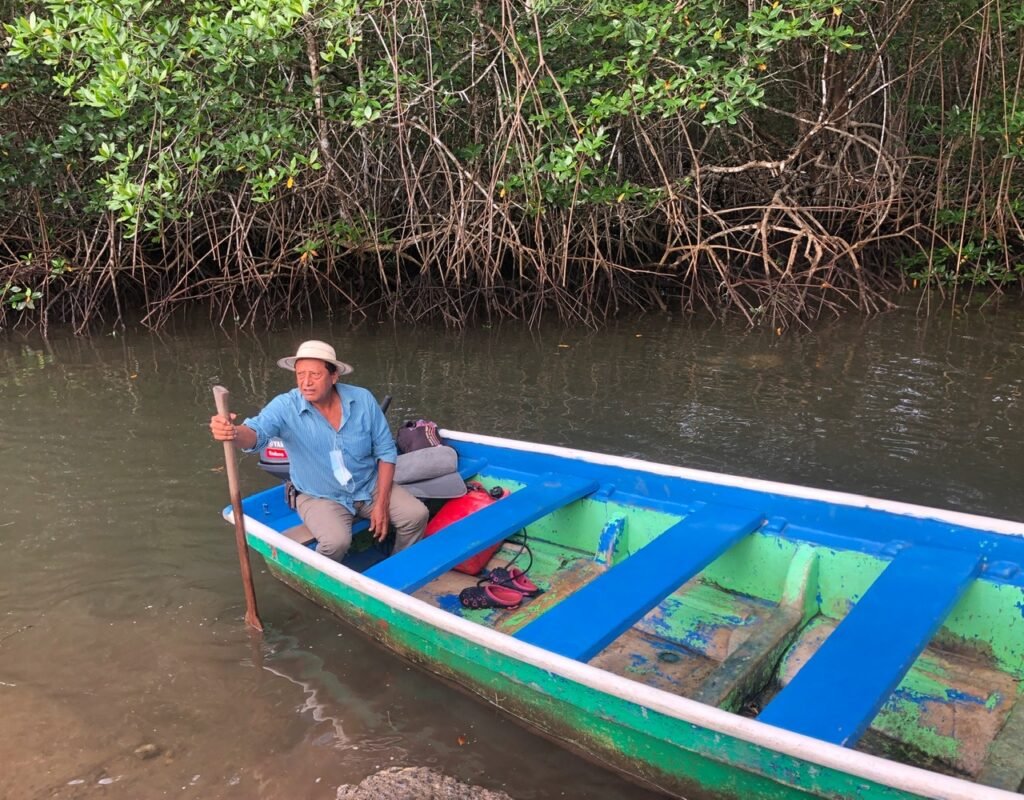
Our guy waiting at the dock for his next ride. They leave about every 30-60 minutes and the public boat dock leaves from the northern ramp. Public buses also leave from this location.

It was originally our plan to take one of these buses, but we’d have to wait 40 minutes. So, carefree Nikita, had a better idea and we ended up in the back of a pickup truck (literally her “dream” haha) to take us back to Tonosi.
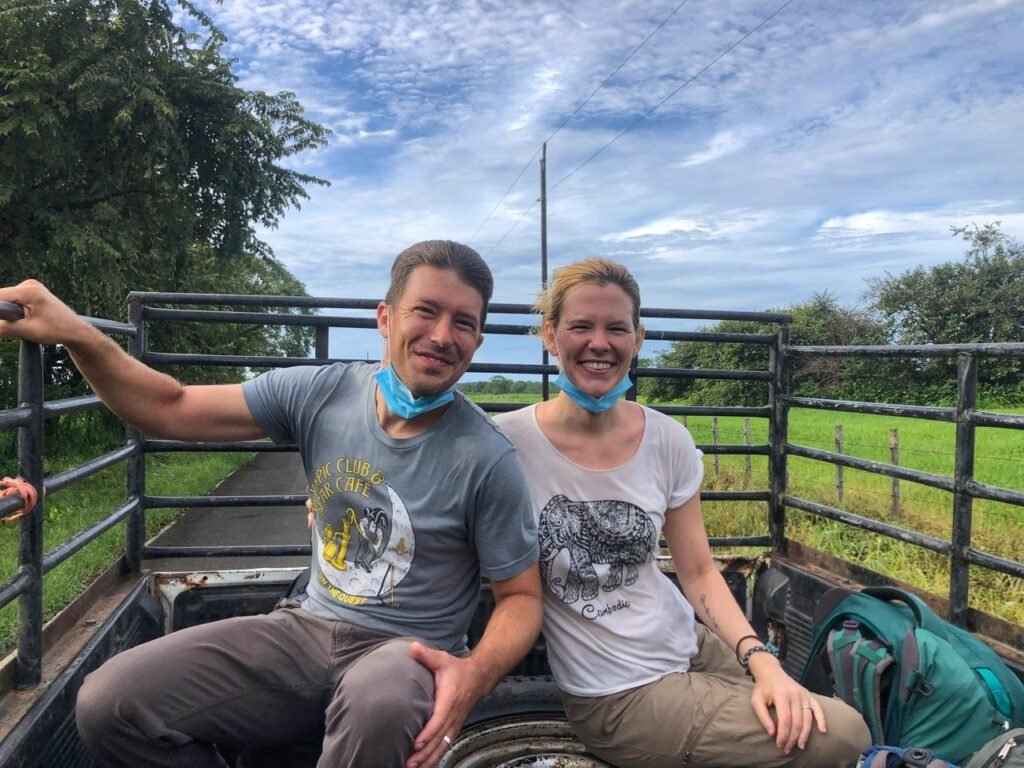
The sensible forty year olds prefer our pick up truck rides seated.
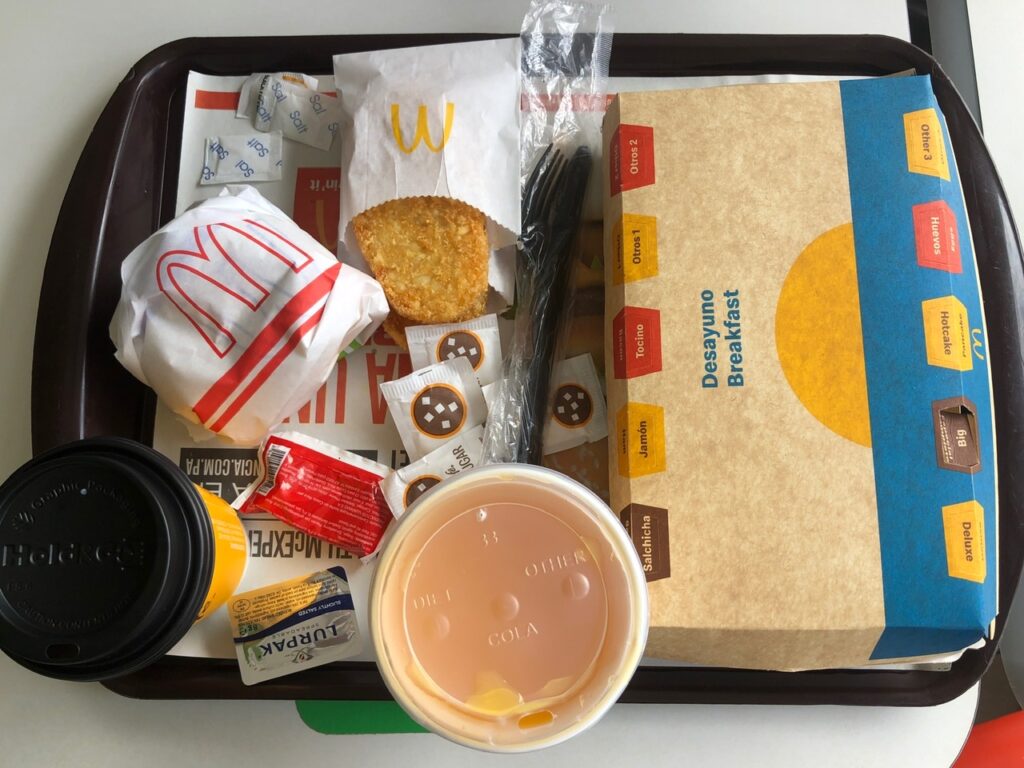
After leg four of our travels that day, and being shuffled from one transport option to the next, we ended up starving. And, with no other food options, we ended up in a place we never thought we’d be together. First time in 14 years…had to happen sometime. ?

